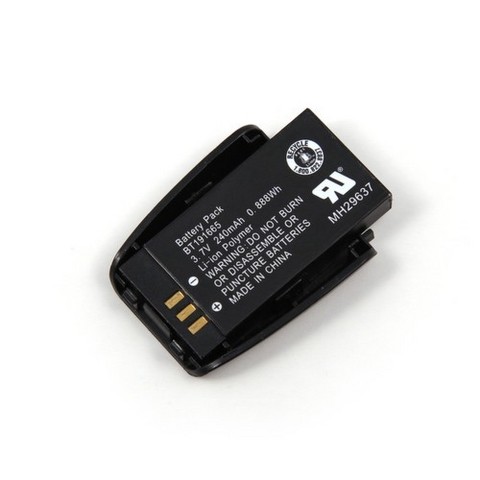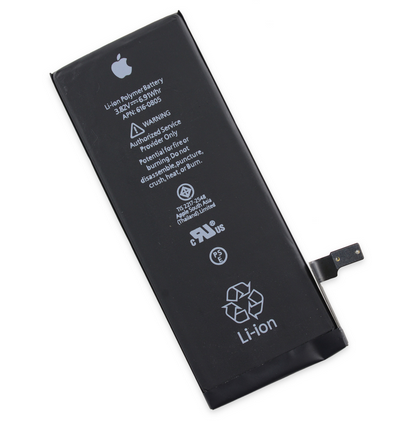Battery Navigation
Latest topics
Search
Battery Statics
Ads
Scientists Home in on Lithium Battery Safety Flaws
Page 1 of 1
 Scientists Home in on Lithium Battery Safety Flaws
Scientists Home in on Lithium Battery Safety Flaws
Scientists at Cambridge have developed a simple, accurate way of "seeing" chemistry in action inside a lithium-ion battery.
By helping them understand how these batteries behave under different conditions the new method -- which involves Nuclear Magnetic Resonance (NMR) spectroscopy -- could help researchers solve the fire safety problems that have dogged the development of these batteries.
Lithium-ion battery technology has enabled the development of many electronic devices we now take for granted, such as laptop computers and mobile phones.
Lithium battery technology will also be crucial for the development of the next generation of electric cars such as the Nissan Leaf, due to be built in the UK from 2013.
But lithium batteries have one serious disadvantage: over several charge and discharge cycles, particularly if the batteries are charged quickly, minute fibres of lithium, known as dendrites, can form on the carbon anodes. These lithium fibres can cause short circuits, causing the battery to rapidly overheat and catch fire.
Writing in the journal Nature Materials, Professor Clare of the University of Cambridge says: "These dead lithium fibres have been a significant impediment to the commercialisation of new generations of higher capacity batteries that use lithium metal as the anode instead of the carbons used today."
Scientists have use theoretical models and optical and scanning electron microscopes to study dendrite formation, but finding a way of quantifying the amount of dendrites formed has proved elusive until now.
The paper describes using a new method based on NMR spectroscopy to see chemistry in action within a tiny, 1cm long, battery enclosed in the same kind of aluminium bags used to keep coffee fresh.
According to Professor Grey: "Fire safety is a major problem that must be solved before we can get to the next generation of lithium-ion batteries and before we can safely use these batteries in a wider range of transportation applications. Now that we can monitor dendrite formation inside intact batteries, we can identify when they are formed and under what conditions.
Our new method should allow researchers to identify which conditions lead to dendrite formation and to rapidly screen potential fixes to prevent the problem."
By helping them understand how these batteries behave under different conditions the new method -- which involves Nuclear Magnetic Resonance (NMR) spectroscopy -- could help researchers solve the fire safety problems that have dogged the development of these batteries.
Lithium-ion battery technology has enabled the development of many electronic devices we now take for granted, such as laptop computers and mobile phones.
Lithium battery technology will also be crucial for the development of the next generation of electric cars such as the Nissan Leaf, due to be built in the UK from 2013.
But lithium batteries have one serious disadvantage: over several charge and discharge cycles, particularly if the batteries are charged quickly, minute fibres of lithium, known as dendrites, can form on the carbon anodes. These lithium fibres can cause short circuits, causing the battery to rapidly overheat and catch fire.
Writing in the journal Nature Materials, Professor Clare of the University of Cambridge says: "These dead lithium fibres have been a significant impediment to the commercialisation of new generations of higher capacity batteries that use lithium metal as the anode instead of the carbons used today."
Scientists have use theoretical models and optical and scanning electron microscopes to study dendrite formation, but finding a way of quantifying the amount of dendrites formed has proved elusive until now.
The paper describes using a new method based on NMR spectroscopy to see chemistry in action within a tiny, 1cm long, battery enclosed in the same kind of aluminium bags used to keep coffee fresh.
According to Professor Grey: "Fire safety is a major problem that must be solved before we can get to the next generation of lithium-ion batteries and before we can safely use these batteries in a wider range of transportation applications. Now that we can monitor dendrite formation inside intact batteries, we can identify when they are formed and under what conditions.
Our new method should allow researchers to identify which conditions lead to dendrite formation and to rapidly screen potential fixes to prevent the problem."
 Similar topics
Similar topics» Sony to sell backup battery for TVs and home appliances
» Lithium Batteries for Motorcycles
» Panasonic To Boost Lithium Ion Battery Output In China
» Five Advantages of Lithium-ion Battery
» Lithium Battery Lifetime
» Lithium Batteries for Motorcycles
» Panasonic To Boost Lithium Ion Battery Output In China
» Five Advantages of Lithium-ion Battery
» Lithium Battery Lifetime
Page 1 of 1
Permissions in this forum:
You cannot reply to topics in this forum













» NIO Phone 2 Smartphone Battery NBET02
» Mercedes Becker Map Pilot Battery HJS100
» Braun Silk-épil 9 Flex Type 5380 Epilator Battery
» Samsung Galaxy Tab Active Tablet PC Battery EB-BT365BBU
» Samsung Galaxy Tab Active 3 SM-T570 Tablet PC Battery EB-BT575BBE